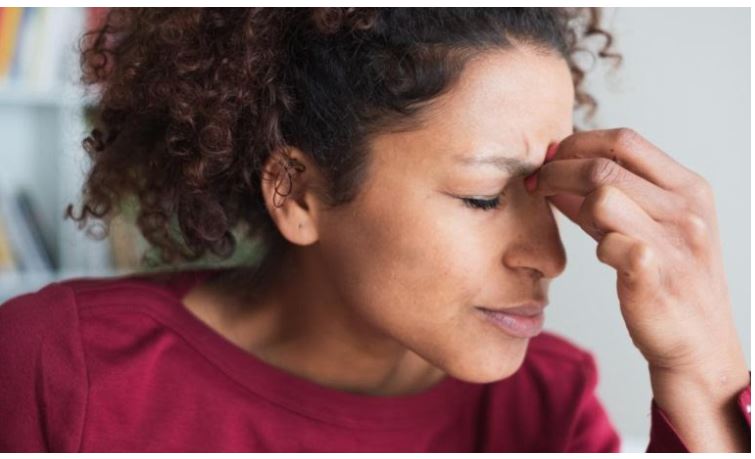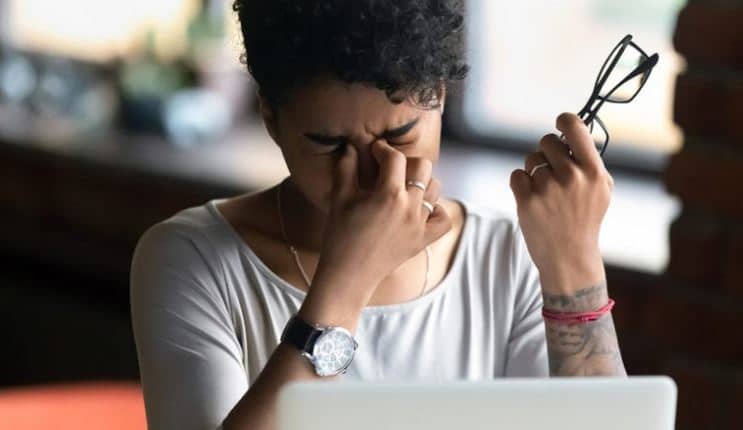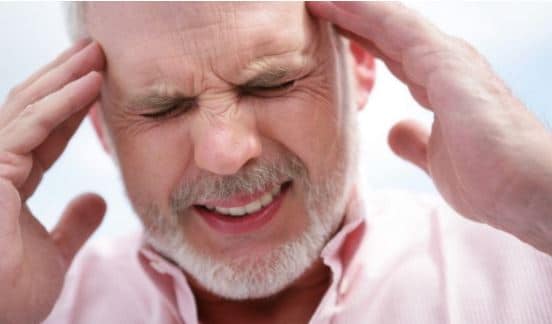Eye headache is a common medical condition among many patients of all ages. and it can occur as a result of many reasons such as eyestrain or chronic migraine
In this paragraph, Pain behind the eyes commonly known as eyes headache can have bad effects on one eye or both, and it may occur with being sensitive towards lights and other types of troubles. An ophthalmologist can determine the cause of the headache behind the eye and recommend the best course of treatment.
Causes of eye headache
1- Eyestrain
Focusing on the screens for long periods of time can lead to eyestrain, which can also result from vision problems. In addition to eye fatigue which can cause pain behind one or both eyes. A person who is suffering from eyestrain can feel some pain or see blurry and hazy things.
Eyestrain occurs due to the following reasons:
- Optic neuritis.
- The severe inflammation of the sclera.
- Glaucoma.
- Graves’ disease, which is an autoimmune disorder.
- Staring at a computer screen, TV, or phone for long periods of time.
2- Migraine
Migraine is a very common condition that causes eye headaches as it can cause intense pain behind the eyes that may last for up to 72 hours.
In addition to migraines, a person may experience:
- Eye pain.
- Dizziness.
- weakness.
- nausea.
- Sensitivity to light and sound.
- Mood changes.
- Vomiting.
- Visual impairment.
Migraine occurs due to the following reasons:
- Psychological causes; such as stress or anxiety.
- Some types of food, such as chocolate or alcohol.
- Physical; like lack of sleep.
- Hormonal causes; like the menstrual cycle.
- Environmental causes; such as pungent odors, fume, or flashing lights.
- Causes related to some medications; like sleeping pills or hormonal treatments.
3. Sinusitis
Nasal congestion is a common symptom of sinusitis. This can result in pressure causing pain behind the eyes.
Due to the inflammation, you could feel aches or pressure in your forehead or cheeks. Some of the common symptoms of sinusitis include:
- Nasal congestion.
- fatigue.
- Pain that gets worse while a person is lying down.
- Pain in the upper teeth.
- the pain of eye headache
Sinusitis occurs due to:
Sinusitis can be caused by bacteria, fungi, or viruses that trap the sinuses due to congestion. The congestion may be due to allergies or a respiratory infection.
4. Cluster headache
A cluster headache is a condition in which a person experiences one to eight short extremely painful headaches throughout the day.
Cluster headaches often occur over periods.
A person may experience a regular cluster headache for a few weeks or months, followed by a period of rest and repeat.
This headache is extremely painful and occurs on one side of the head. Often, additional symptoms will appear on the same side of the face as the headache. These symptoms can include:
- Stuffy or runny nose.
- Watery or red eyes.
- Sweating.
Cluster headache occurs due to:
Generally, researchers believe that males are suffering from cluster headaches more than females. And it can occur due to some genetic components, also some people may have a higher risk than others.
5. Headache
Tension headache is the most common type of headache, and it is more common in females than in males. Some people experience tension headaches once or twice a month, while others suffer more often. If this continues for 3 months or longer, doctors classify the headache as chronic.
- Tension headaches can make the patient feel pain or pressure around the area of his eyes.
- And Tension headaches can also cause scalp pain.
- Also, Tension headache pain may be mild, occur in the forehead, and extend to the neck.
the reasons for tension headache:
- Cold temperatures.
- Stare at the screen for a long time.
- Long-distance driving.
- Muscle cramps in the neck or head.
- Cluster headache
Eye headache treatment
Practicing sports, exercise and workouts can help in reducing or preventing eye headaches. Avoiding the various factors below will often help relieve or prevent pain behind the eyes:
- loud noises.
- Strong fragrance and other pungent odors.
Infections. - Alcohol use.
Feeling hungry. - stress.
- Changes in hormones.
- fatigue.
- Bright lights.
- Lack of sleep.
Over-the-counter pain relievers can often relieve a mild or moderate headache.
but prescription medications may be necessary when the pain is severe.
Sometimes some medical problems may occur that cause pain.
So the doctor may prescribe some antidepressants whose main goal is to regulate some hormones or make the patient feel relaxed in the muscles and thus reduce the feeling of pain.
Trying the following things at home can also help relieve your headache:
- Limit or avoid caffeine
- Avoid alcohol.
- Avoid tobacco products.
- Exercising regularly.
- Avoid processed foods.
- A person may feel comfortable sleeping in a dark room. Applying a cool, damp washcloth to the eyes may also help.
- Eye headache treatment
Meanwhile, antibiotics are a fairly standard treatment for a sinus infection when bacteria are responsible for a left or right eye headache.
Decongestant nasal sprays can also help. But don’t use these sprays for more than 3-4 days at a time.
When to see a doctor?
If a person frequently has a headache behind the eye, they should see a doctor. Our doctors at Royal Spanish Center may recommend an eye examination and prescribe specialized treatments apart from pain relievers. Do not forget that lifestyle modification helps a lot in reducing eye headaches and avoiding recurring pain.
Need an appointment? Book now




